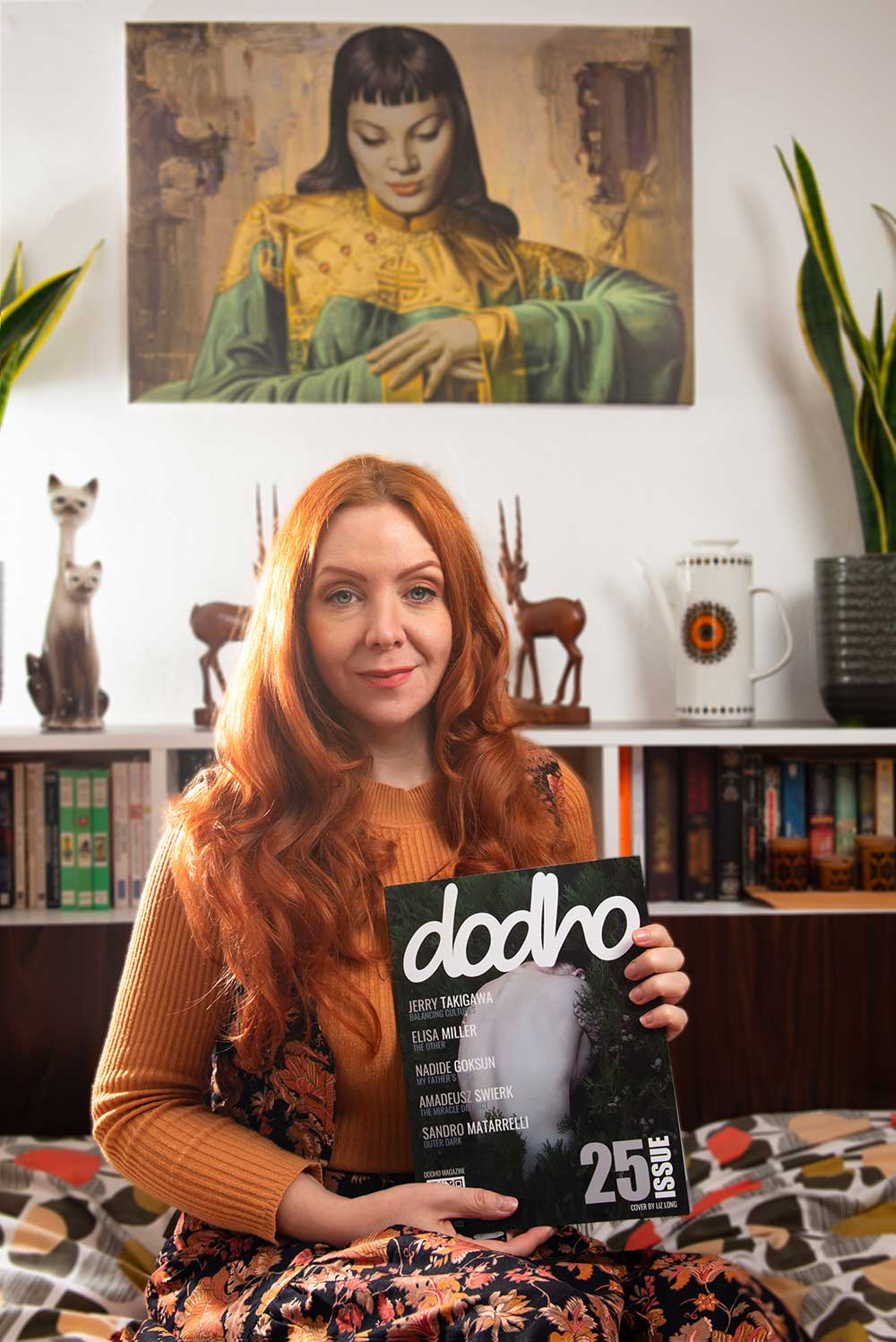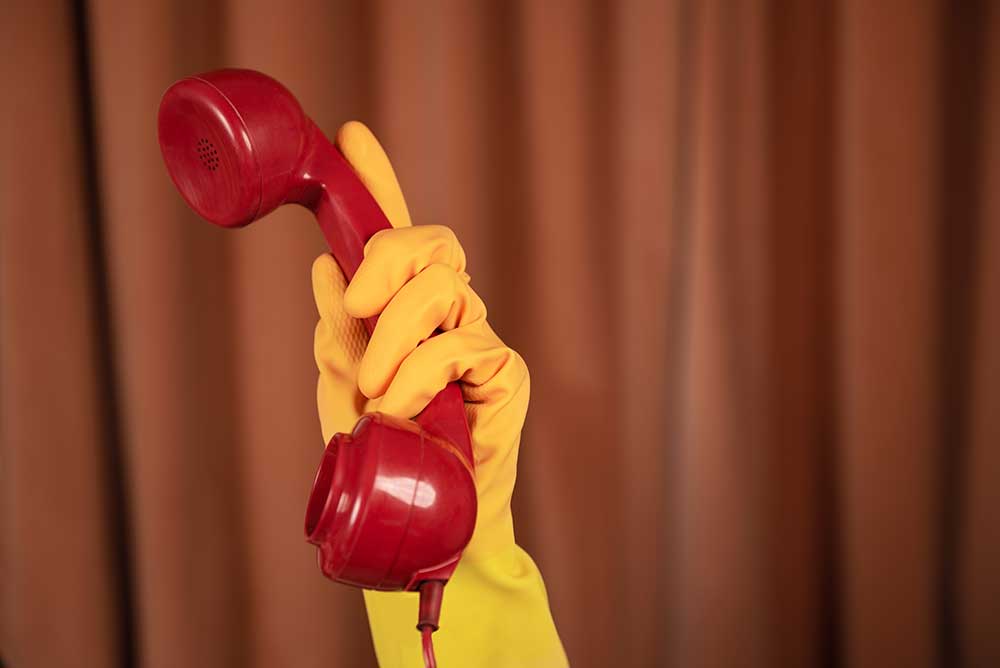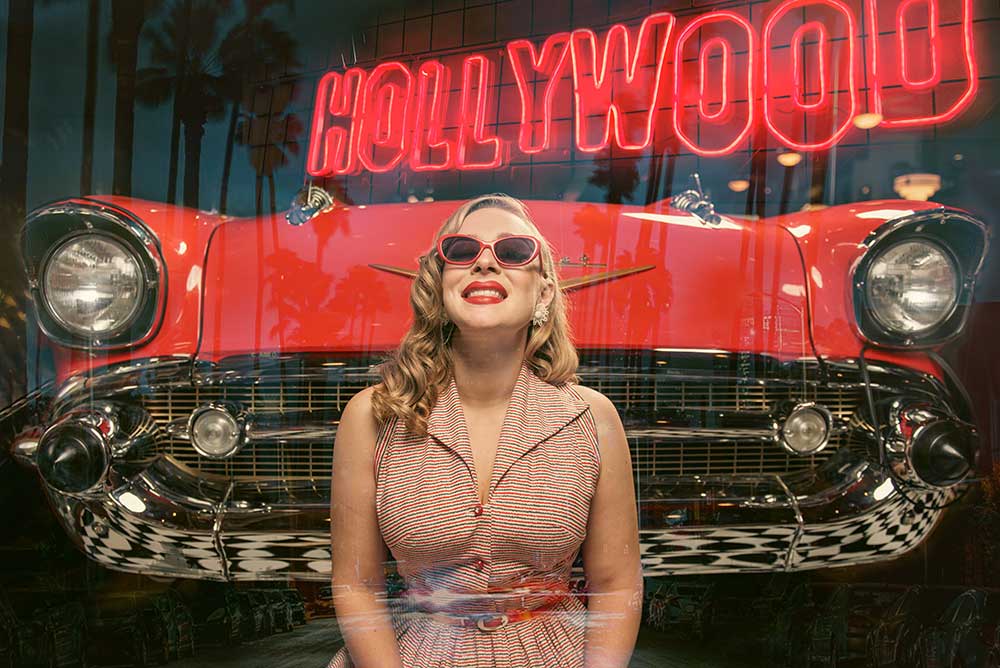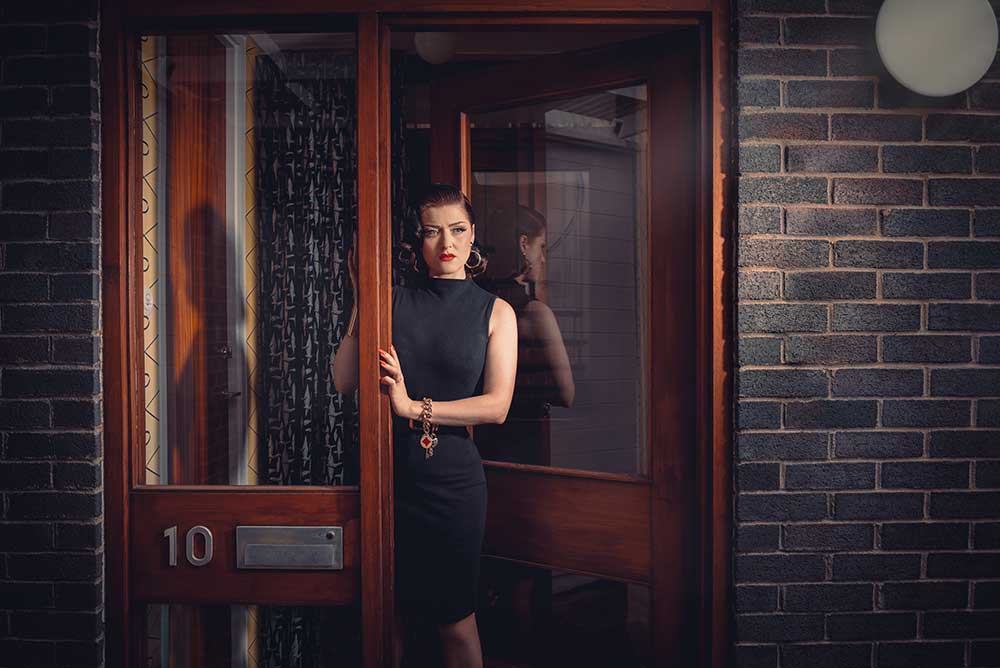Through a discerning and colorful lens, Elisa Miller invites us into her enchanting visual world, navigating through the deep and often tumultuous waters of identity, self-perception, and the representation of women via her photographic work.
In this interview, we will delve into her acclaimed project “The Other,” a touching exploration of the self and society’s impositions, designed to provoke contemplation and perhaps challenge comfortable perceptions. “The Other” encourages us to reflect on the limitations in expressing our true selves, constraints imposed by society, domestic circumstances, or even by our very own insecurities and fears. Each image in this series beckons profound reflection on the barriers we face to live authentically, boldly, and freely. [Official Website]
Elisa, to start off, we’d like to know, how was your first encounter with photography and what motivated you to turn it into your profession and passion?
My journey with photography began in my teenage years. I stumbled upon a book at a garage sale that demystified the art of developing film and taught me the basics of composition. Back then, I couldn’t afford a proper camera, so I had fun experimenting with disposable ones.
Later on, I shifted my focus to oil painting, as it was more financially accessible for me at the time. Photography took a backseat for years until I relocated to the UK. About 5 years ago I took the plunge and invested in my first digital camera.
My primary inspiration is the world of cinema. I’m an avid fan of a wide spectrum of films, from Hollywood classics to avant-garde independent cinema, and films of the 80s and 90s. As I delved deeper into photography, I found myself naturally inclined towards the art of storytelling through still images, akin to cinematic frames.
Your project “The Other” delves deeply into themes of identity and self-perception. How did the inspiration to embark on this photographic series come about?
The inspiration of “The Other” comes from a personal journey of introspection and observation. I became captivated by the intricate dance between our authentic selves and the roles society imposes on us. Witnessing this struggle, I felt compelled to visually articulate these complexities. Through each frame, I aim to unravel the layers of self-perception, inviting viewers to contemplate the boundaries we encounter in our pursuit of authenticity.
The inspiration for my project “The Other” stemmed from a moment of introspection, perhaps what some call a midlife contemplation. It was a phase in my life when I started questioning who I truly was and what I genuinely wanted for myself. I realized that I had been navigating life according to societal expectations, doing what was expected of me, without pausing to reflect deeply.
Being someone who often seeks to please others, I reached a point where I lost sight of my own desires and authentic identity. My sense of self had become a blend of meeting societal standards and fitting in. It was a comforting notion that I was doing what was ‘right.’ However, as time passed, I began to awaken to the realisation that this narrative didn’t align with my inner self.
This collection of work serves as a visual reflection on the daily pressures women face in society. It extends beyond that, delving into the broader themes of the meaning of our lives, societal constructs, and the exploration of alternate realities and possibilities.
The photographs in “The Other” raise provocative questions about how women view themselves and how they are seen by society. What role do you think photography plays in altering traditional perceptions and gender expectations?
Photography serves as a powerful tool for introspection on these crucial questions. It holds a special ability to challenge established norms and spark contemplation. With “The Other,” my aim is to address conventional ideas surrounding femininity and womanhood directly. Through diverse narratives and perspectives, I strive to break down stereotypes and expand the definition of womanhood.
Through these images, I hope to ignite conversations and prompt a shift in how society perceives and understands identity.
Your series “Alarm Call” begins with a reference to Betty Friedan’s “The Feminine Mystique”. Could you talk more about how this work influenced your perspective and the creation of this specific series?
“The Feminine Mystique” by Betty Friedan played a role in shaping my perspective. After I began working on the series, a friend recommended the book to me. As I delved into its pages, I was struck by how closely it mirrored the emotions and themes I was exploring in my photography.
Even though the book was written in the 1960s, its insights remain strikingly relevant in our contemporary society. Friedan courageously challenged the prevailing notion that a woman’s fulfilment was synonymous with the role of a housewife-mother.
This resonance between Friedan’s work and my own artistic journey provided a powerful foundation for “Alarm Call.” The series endeavours to juxtapose prescribed societal roles with women’s genuine desires and aspirations. Through my photographs, I aim to convey the profound sense of disconnection that arises when one’s life doesn’t align with one’s true aspirations. It’s an awakening, a call to action – hence the title, “Alarm Call.” echoing Björk’s lyrics: “This is an alarm call, so wake up now.”
Dolly’s Diner” has a sad and reflective background behind its vintage and colorful aesthetic. How do you balance cheerful visual elements with darker and deeper themes in your work?
The interplay of cheerful visuals with deeper themes in my work is deeply rooted in my love for vintage and pop culture, a passion I’ve cherished for over two decades. Collecting clothing, furniture, and memorabilia from the 50s and 60s became a significant part of my life. Back in the days in France, my home resembled a genuine museum.
My affinity for mid-century charm is palpable and heavily influences my art. There’s a certain Hollywood allure to it—everything appears vibrant, rich in colour, and impeccably polished. However, beneath this glossy surface, one can discern a deeper layer, a sense of melancholy, fragments of sadness, and echoes of trauma. I’m intrigued by what lies behind the veneer, the façade we construct to get on with life. I seek to touch the core of these hidden traumas and explore the depths beyond the mask.
You’ve mentioned that your work explores aspects of the female psyche from your female perspective. How do you believe your identity and personal experiences have influenced your artistic approach and the stories you choose to tell?
My artistic approach is deeply rooted in personal introspection. Through my work, I open up about my own challenges, how I interrogate life, and my perspective on the world and our patriarchal society. While I recognise that I can’t possibly represent every woman, I remain authentic to my own unique perception. In my storytelling, I intentionally leave room for interpretation, hoping that it will resonate with a broader audience.
In “Murder, My Sweet”, you explore complex emotions like jealousy and insecurity. How do you decide which emotions or mental states you want to explore in your photographs, and what is your process for visually conceptualizing these intangible concepts creatively and effectively?
My process begins with journaling and reflecting on the patterns that have shaped my own life. In the case of “Murder, My Sweet,” the focus is on delving into our insecurities. With the proliferation of social media, there’s an overwhelming pressure for women to measure up to one another constantly. It’s a pervasive issue. Instead of fostering unity and solidarity, it often leads to competition and a sense of inadequacy.
When it comes to visually conceptualizing these emotions, it’s a bit of a mystery even to me. I often find that inspiration emerges from a place that’s hard to define. I rely on story development and use storyboards to structure my ideas, but the true essence of the creative process arises from that wellspring of inspiration. In those moments, I let go of conscious thought, allowing my imagination to flow freely.
As a self-taught photographer, how has your journey in the world of photography been? What have been some of the greatest challenges and rewards of following a self-taught path?
Being a self-taught photographer comes with its fair share of challenges. I’ve often grappled with imposter syndrome. I rely on experimentation and trust my instincts. Staying true to my ideas and vision has been crucial. Winning awards was a validating moment, a sign that I might be on the right path.
Working solo, just me and my model, has been both liberating and challenging. I don’t have external benchmarks aside from my judgment, pushing me to continually refine my craft. I’m an avid gallery-goer, immersing myself in photo exhibitions, paintings, and museums. I study films to dissect how directors use lighting and storytelling to create specific atmospheres. It’s my way of deepening my understanding of photography.
Given that “The Other” is an ongoing project, can you share what we can expect from future chapters of this series? Do you have any specific goals or vision for the future development of this project?
Certainly. I’m currently in the process of crafting two new chapters for “The Other.” One revolves around a metaphorical road trip, a journey towards self-discovery and liberation. The other chapter delves into the societal pressures surrounding beauty standards and youthfulness, which are a significant issue for women.
Finally, beyond “The Other”, do you have any other future projects or themes in mind that you plan to explore in your photography in the near future?
Yes, I do have some ideas in mind for future projects. However, I’m currently fully immersed in the development of “The Other,” which is taking up most of my creative energy. My ultimate plan is to compile enough material to potentially work on a book and a solo exhibition in the future.










